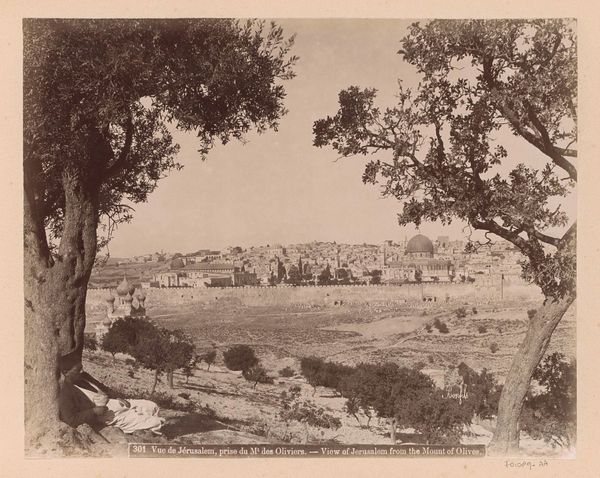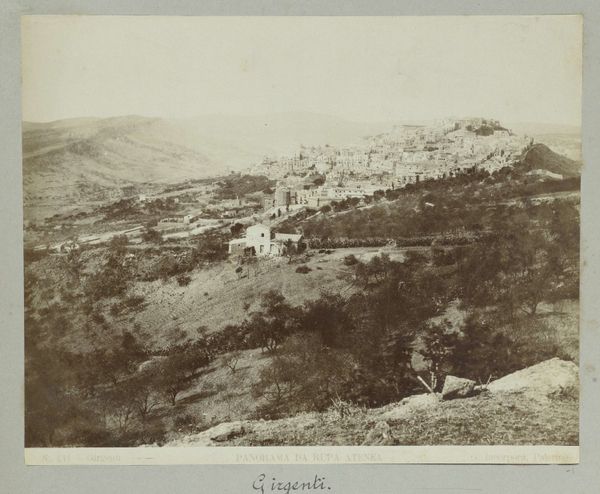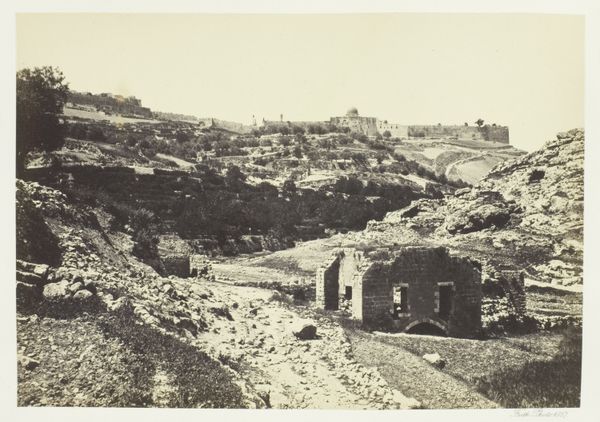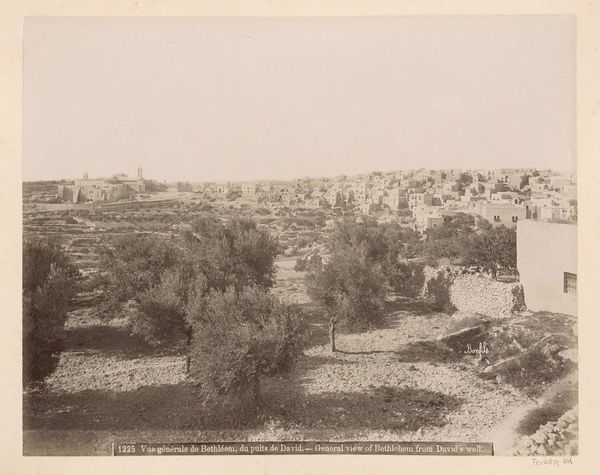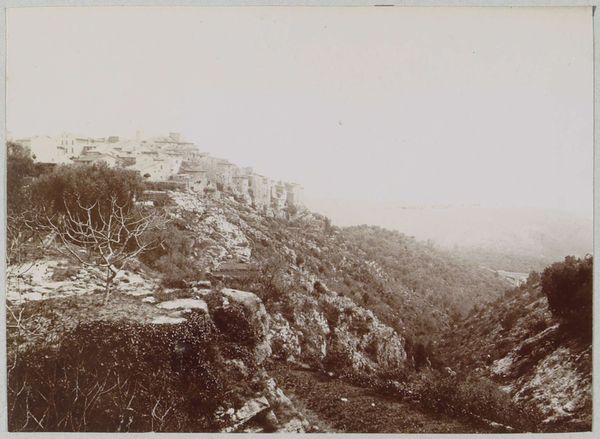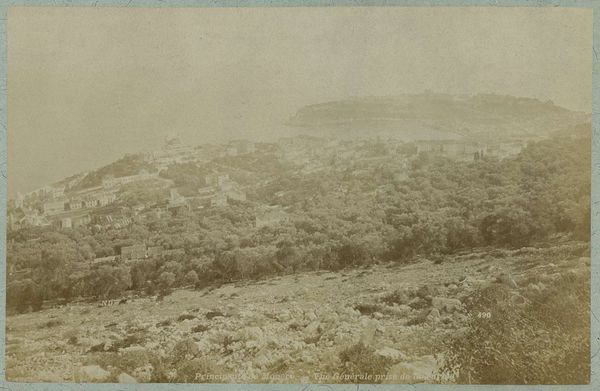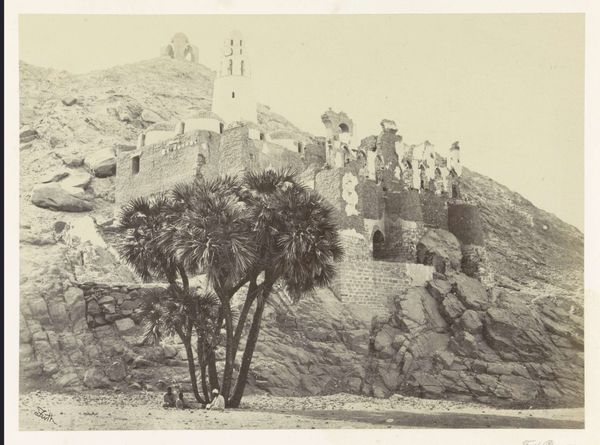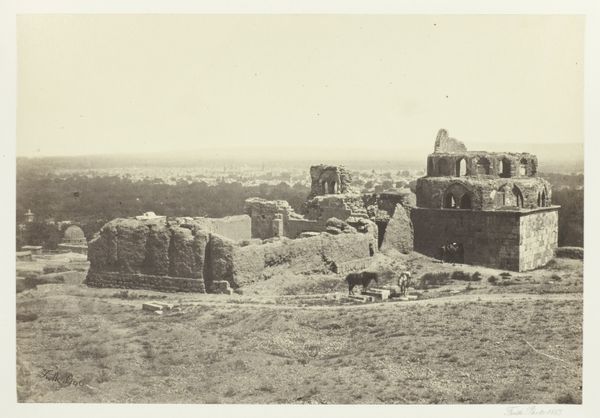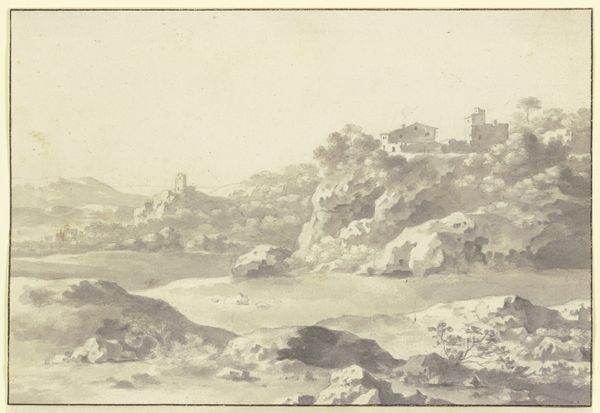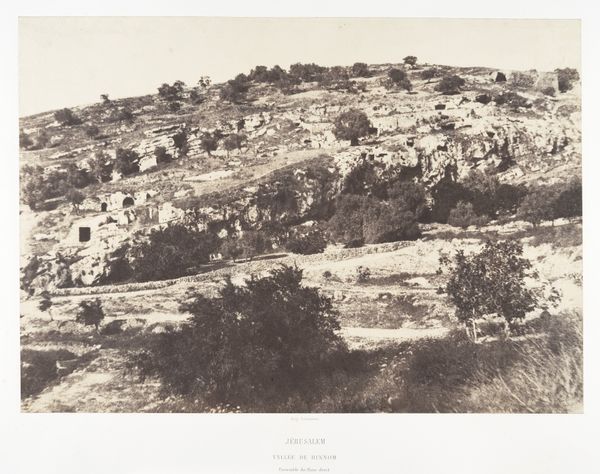
tempera, print, photography, albumen-print
#
tempera
# print
#
landscape
#
photography
#
ancient-mediterranean
#
orientalism
#
albumen-print
Dimensions: height 192 mm, width 294 mm
Copyright: Rijks Museum: Open Domain
Editor: We're looking at "View of the Parvati temple complex in Pune, Maharashtra, India," a photograph by Samuel Bourne, taken between 1865 and 1872, using the albumen print process. I’m struck by how the architectural forms contrast with the wild, overgrown landscape. What compositional elements stand out to you? Curator: The image’s success lies precisely in that interplay of organic and geometric forms. Consider how Bourne uses the rising diagonal of the hillside. It leads our eye upward towards the complex structure of the temple and other buildings. Notice how the tonal range, from the darker foreground foliage to the light, hazy distance, creates depth and perspective. Editor: So the photograph isn't just capturing the temple, but also the way light and shadow play across the terrain. Curator: Exactly. Bourne masterfully manipulates the qualities inherent in the albumen print medium. Observe the detail rendered in the vegetation compared to the almost ethereal rendering of the distant landscape. How do these choices impact your reading of the photograph? Editor: It gives the temple a kind of…authority. It feels solid and present while the background kind of fades into abstraction. So, Bourne's choice of printing method enhances the clarity of form? Curator: Indeed. The choice to emphasize specific visual elements directs our gaze. This albumen print, rather than serving merely as documentation, operates on a plane of formal concerns. The print reveals, perhaps even imposes, an aesthetic order. Editor: I see, I was so focused on the subject that I had missed some of the key pictorial devices. Thank you, that was so helpful. Curator: My pleasure. Focusing on these fundamental visual elements unveils so much in art.
Comments
No comments
Be the first to comment and join the conversation on the ultimate creative platform.
